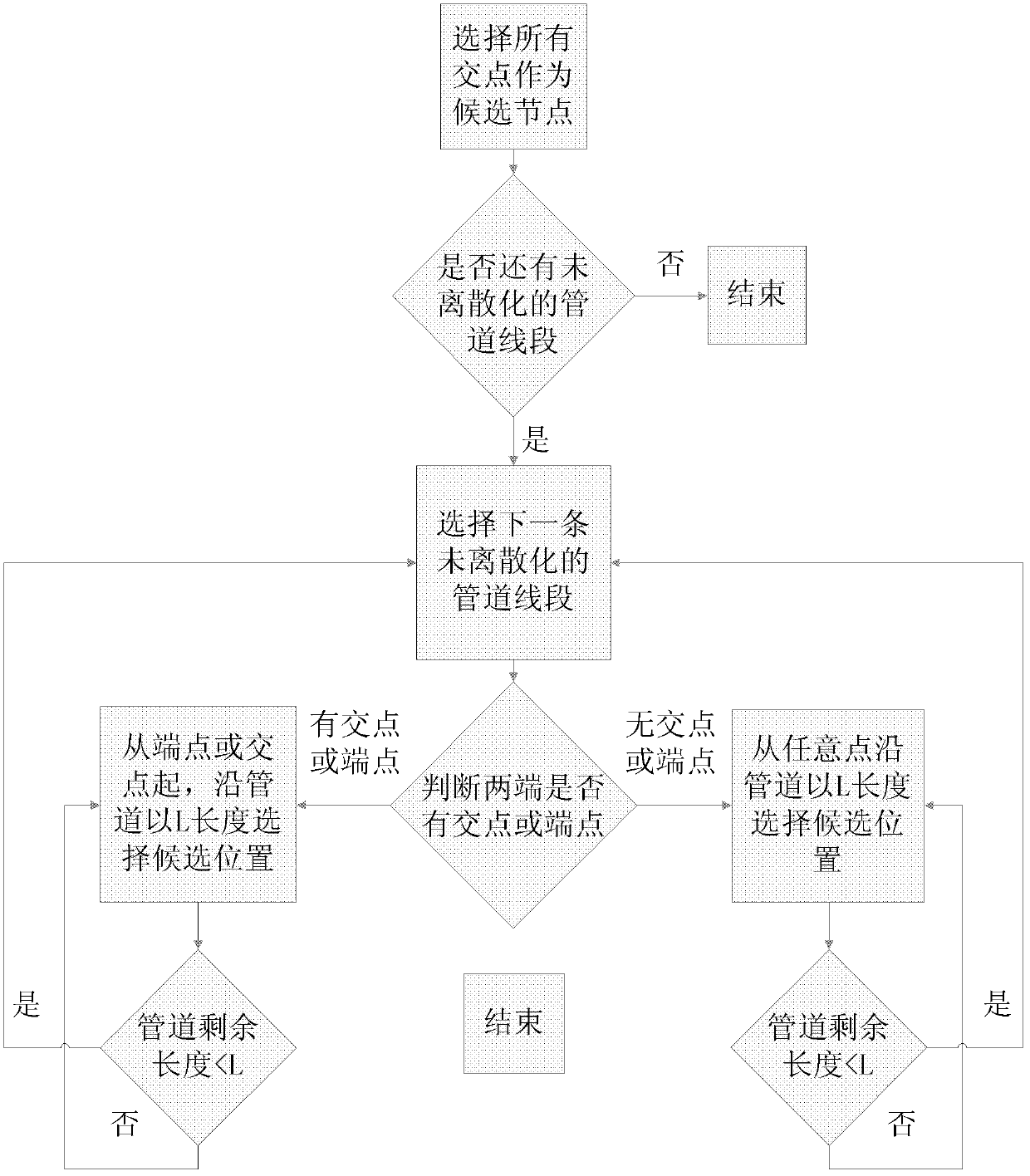Method for arranging nodes in mobile sensor network by utilizing pipelines
A mobile sensor and mobile node technology, applied in network topology, network planning, electrical components, etc., can solve the problems of large number of mobile nodes, no consideration of node deployment method and system efficiency, waste of node resources, etc., to achieve high practicability and Implementability, the effect of avoiding requirements requiring highly intelligent path planning capabilities
- Summary
- Abstract
- Description
- Claims
- Application Information
AI Technical Summary
Problems solved by technology
Method used
Image
Examples
Embodiment Construction
[0047] figure 1 It is the overall flow chart of the present invention
[0048] Step 1: Deploy the pipeline and divide the entire monitoring area into several equal-area blocks.
[0049] Step 2: Perform pipeline discretization, and convert the pipeline into several discrete candidate points.
[0050] Step 3: Deploy the mobile nodes on these candidate points, so that the monitoring of the area with the least number of nodes reaches the K-reachable state. When no event occurs, the mobile nodes will not move.
[0051] Step 4: Once an event occurs, node movement will cause a drop in reachability, and the mobile node will reach the K-reachable state again through redistribution.
[0052] figure 2 It is a flow chart of the second step pipeline discrete method of the present invention. Pipeline discretization is to transform the original continuous pipeline into several discrete alternative points. After discretization, the minimum number of K-reachable problems is transformed i...
PUM
 Login to View More
Login to View More Abstract
Description
Claims
Application Information
 Login to View More
Login to View More - Generate Ideas
- Intellectual Property
- Life Sciences
- Materials
- Tech Scout
- Unparalleled Data Quality
- Higher Quality Content
- 60% Fewer Hallucinations
Browse by: Latest US Patents, China's latest patents, Technical Efficacy Thesaurus, Application Domain, Technology Topic, Popular Technical Reports.
© 2025 PatSnap. All rights reserved.Legal|Privacy policy|Modern Slavery Act Transparency Statement|Sitemap|About US| Contact US: help@patsnap.com



